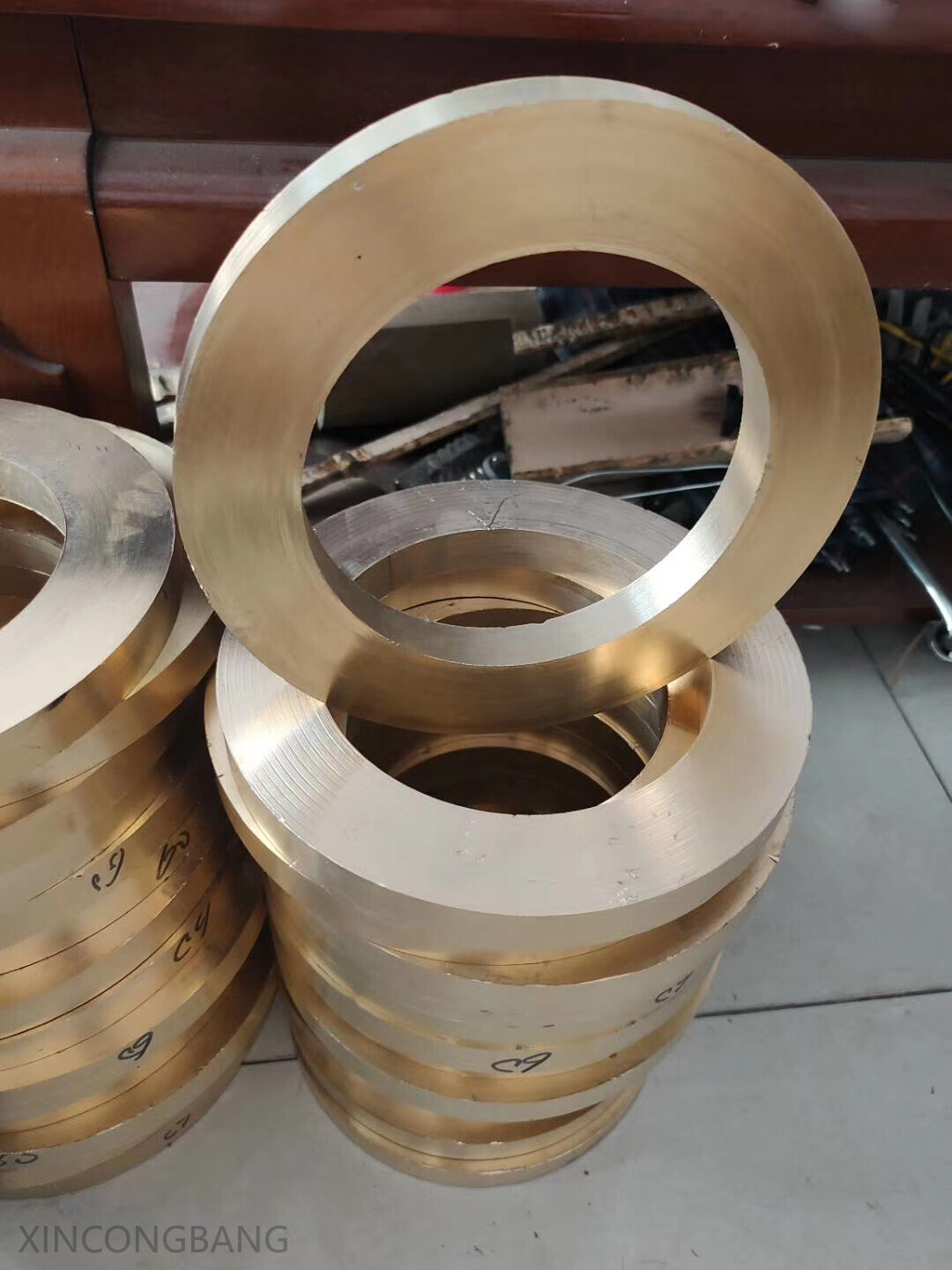Dimensional Range
C96900 copper bushings adhere to standardized dimensions for cylindrical and flanged designs. Key specifications include:
- Inner Diameter (d₁): Ranges from 6 mm to 200 mm .
- Tolerances: Governed by international standards (e.g., ISO 4379:2018), ensuring precision in fit and alignment for sliding bearings.
- Common Configurations:
- Cylindrical Bushings: Solid, single-layer structures without oil grooves or holes.
- Flanged Bushings: Include axial flanges for enhanced load distribution and mounting stability.
International Standards
C96900 bushings comply with the following standards:
- ISO 4379:2018: Specifies dimensions, tolerances, and material requirements for copper alloy bushings with inner diameters of 6–200 mm. This standard applies to both cast and forged alloys, emphasizing surface roughness (per ISO 21920-1:2021) and structural integrity .
- GB/T 18324-2001: The Chinese national standard equivalent to ISO 4379:1993, covering cylindrical and flanged bushings .
- DIN ISO 4379-1995: The German adoption of ISO 4379:1993, ensuring compatibility with European engineering practices .
Chemical Composition
C96900 is a copper-nickel-tin (Cu-Ni-Sn) spinodal alloy primarily strengthened through spinodal decomposition, a heat treatment process that enhances its mechanical properties without beryllium content. Based on the provided evidence, its typical chemical composition ranges are as follows:
- The alloy is part of the "ToughMet 3 CX" series (UNS C96900), optimized for high strength and wear resistance .
- Its composition avoids beryllium (Be), making it environmentally safer than beryllium-copper alloys while maintaining comparable performance .
Mechanical Properties
C96900 exhibits exceptional mechanical properties due to its spinodal microstructure. Key parameters include:
2.1 Tensile Strength
- Ultimate Tensile Strength (UTS): Up to 120 ksi (827 MPa) .
- Yield Strength (0.2% Offset): Typically ≥100 ksi (689 MPa) (inferred from UTS and spinodal alloy behavior).
2.2 Hardness
- Hardness: Up to HRC 34 (Rockwell C scale) .
- This high hardness ensures excellent wear resistance, critical for bearings and drilling components.
2.3 Additional Properties
- Elastic Modulus: ~11000 ksi (76 GPa) (similar to other high-strength copper alloys) .
- Fatigue Strength: Superior to cast leaded bronzes and manganese bronzes, making it ideal for dynamic applications .
- Ductility: Moderate elongation (exact values not specified but inferred to balance strength and machinability).
Heat Treatment and Processing
C96900 undergoes specific heat treatment to achieve its optimal properties:
- Solution Treatment: Heated to 1520°F (825°C) for 1 hour, followed by water quenching .
- Aging: Aged at 800°F (425°C) for 4 hours, then water-quenched .
This process triggers spinodal decomposition, creating a fine, homogeneous microstructure for enhanced strength and wear resistance.
Production process and product advantages of C96900 copper bushing:
1. Production process
Alloy composition and casting process
C96900 belongs to copper-nickel-tin alloy (Cu-Ni-Sn), which is made by centrifugal casting with air pressure by using spinodal decomposition heat treatment strengthening process. Its forging process is similar to that of copper-beryllium alloy, but the strength exceeds that of traditional beryllium copper through improved heat treatment. In addition, sand casting, metal mold casting, centrifugal casting, etc. are all common casting methods for copper bushings.
Key processing steps
Heat treatment: Spinodal decomposition is the core process, and the hardness and strength of the material are improved by solution treatment + aging strengthening.
Precision machining: After casting, machining (such as turning, drilling), surface treatment (such as degreasing, phosphating) and finishing are required to ensure dimensional accuracy and surface quality.
Quality control: including cleaning of castings, secondary processing after cooling, anti-deformation packaging of finished products, etc.
2. Product Advantages
Excellent mechanical properties
High strength and high hardness: After the spinodal decomposition treatment, the tensile strength is significantly improved, and the hardness is 1 times higher than that of traditional bronze, which can withstand heavy load conditions.
Excellent wear resistance: The internal structure is dense, and the service life is doubled under low speed and high load conditions.
Corrosion resistance and environmental adaptability
It has strong resistance to seawater corrosion and erosion, and is suitable for shipbuilding and marine engineering applications.
It can still maintain stable performance under high temperature environment, and its thermal conductivity is better than ordinary steel.
Functional characteristics
Non-magnetic: It meets the needs of aerospace, precision instruments, etc. for non-magnetic materials.
Conductivity: It retains the conductivity of copper-based alloys and is suitable for special industrial scenarios.
Environmental protection and safety
It does not contain beryllium (compared with beryllium copper alloy), avoiding the toxicity of beryllium, and its performance is close to or even better than beryllium copper.
3. Application fields
C96900 copper bushings are widely used in aerospace (such as landing gear bearings), marine equipment, heavy-duty machinery (mining, metallurgical equipment) and precision instruments, especially suitable for complex working conditions with high corrosion, high load and non-magnetic requirements.
Q1:Do you provide samples? Is it free or extra?
A1:Yes, we can provide samples free of charge and the customer will pay the freight.
Q2:What if I don't have export experience ?
A2:We have reliable forwarder agent which can ship items to you by sea/air/Express to your doorstep. Any way, we will help you choose the most suitable shipping service.
Q3:How long is your lead time?
A3:If it is in stock, it is usually 5-10 days. Or, if there is no inventory, 15 days, depending on the quantity.
Q4:What are your terms of payment?
A4:30% T/T deposit in advance, 70% T/T balance within 5 days after B/L copy, 100%.Irrevocable L/C at sight, 100% Irrevocable L/C after receive B/L 30-120 days, O/A.
Q5:How is your technical support?
A5:We provide lifetime online support through Whatsapp/ Skype/ Wechat/ Email. Any problem after delivery, we will offer you call anytime.
Welcome To Your Inquiry
What can we help you?
RELATED PRODUCTS










